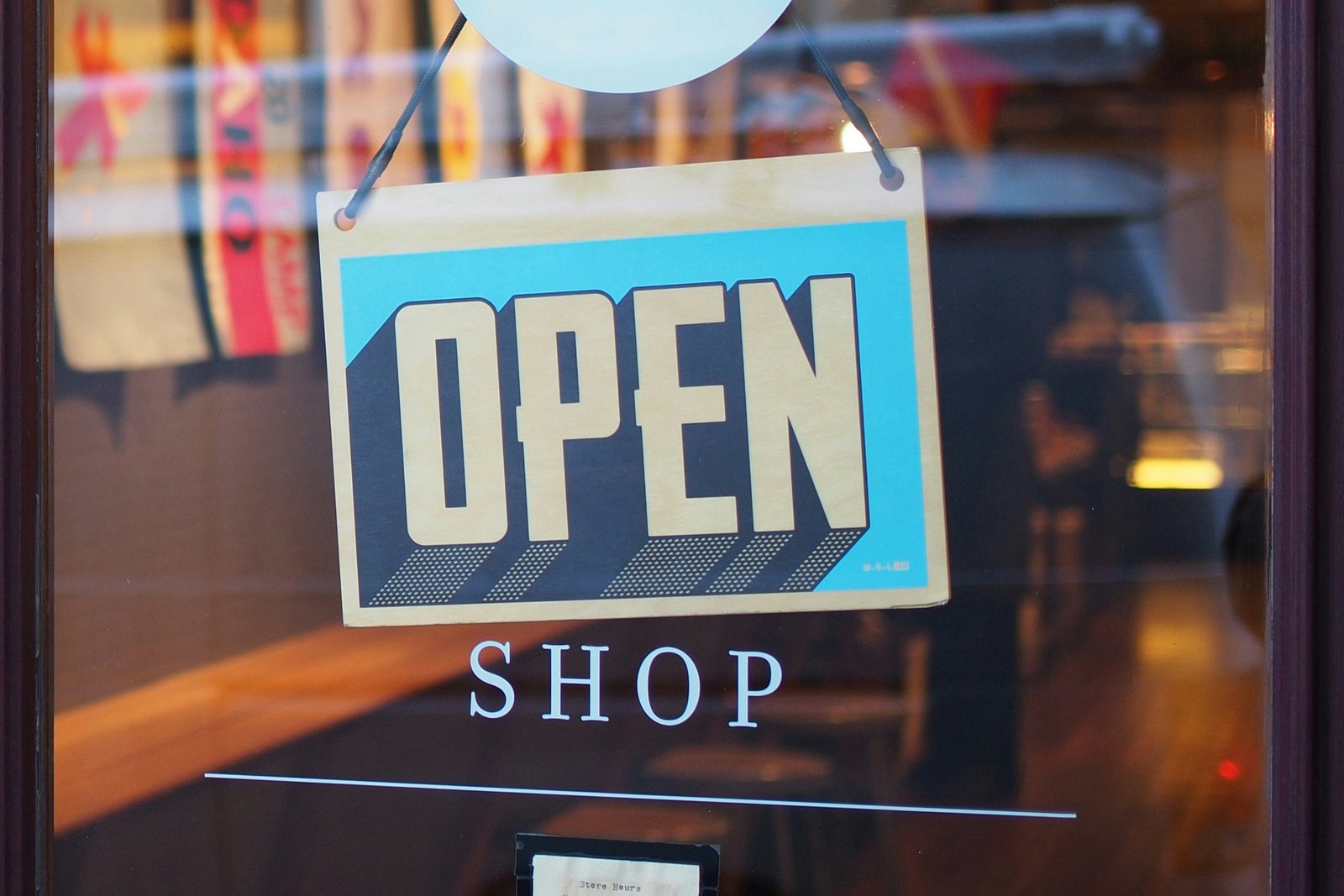Running a retail business in Australia comes with its unique set of challenges and risks. From property damage to liability issues, retailers face numerous potential pitfalls. Ensuring adequate insurance coverage is crucial for safeguarding your business. In this article, we will explore the various types of insurance available for Australian retailers and how they can safeguard your enterprise from unforeseen events.
Understanding Retail Insurance
Retail insurance is a specialized type of business insurance designed to cover the unique risks associated with retail operations. It encompasses a range of policies that protect against different types of losses, ensuring that your business can withstand various challenges.
Retail insurance isn’t a one-size-fits-all solution. It includes multiple coverage options, each tailored to address specific risks. Common types of retail insurance include general liability, property insurance, business interruption insurance, workers’ compensation, commercial auto insurance, product liability insurance, cyber liability insurance, and crime insurance.
General Liability Insurance
Coverage Details
General liability insurance protects retailers against claims of bodily injury, property damage, and personal injury. This type of insurance is crucial as it covers legal fees, settlements, and medical costs if someone is injured on your premises.
Importance for Retailers
For retailers, general liability insurance is indispensable. It safeguards against common incidents such as slip-and-fall accidents, which can result in costly lawsuits. Without this coverage, a single incident could potentially bankrupt a small business.
Real-Life Examples
Consider a scenario where a customer slips on a wet floor in your store and breaks their arm. In the event of a lawsuit, general liability insurance would provide coverage for both medical expenses and associated legal fees. This coverage provides peace of mind, knowing that your business is protected from such liabilities.
Property Insurance
Coverage for Physical Assets
Property insurance protects your business’s physical assets, including the building (if owned), inventory, fixtures, and equipment. This coverage is vital in case of events like fire, theft, or natural disasters.
Types of Property Insurance
There are two main types of property insurance: all-risk policies and named-peril policies. All-risk policies cover a wide range of incidents except those specifically excluded, while named-peril policies cover only the risks listed in the policy.
Case Studies
Imagine a fire breaking out in your store, damaging inventory and equipment. Property insurance would cover the cost of replacing the damaged items and repairing the store, enabling you to get back to business as soon as possible.
Business Interruption Insurance
What It Covers
Business interruption insurance compensates for lost income and operating expenses if your business is forced to shut down temporarily due to a covered event, such as a natural disaster or fire.
Why It’s Crucial for Retailers
Retailers rely heavily on consistent revenue streams. A temporary closure without this insurance could result in significant financial loss. Business interruption insurance ensures that you can continue to pay expenses like rent and employee salaries even when your store is not operational.
How to Calculate Coverage Needs
To determine the right amount of coverage, calculate your business’s daily revenue and expenses. Consider how long it might take to resume operations after a disaster. This assessment helps ensure you have adequate coverage to survive an extended closure.
Workers’ Compensation Insurance
Legal Requirements
Most states in Australia require businesses to carry workers’ compensation insurance, which covers medical expenses and lost wages for employees injured on the job.
Benefits for Employees and Employers
For employees, this insurance ensures they receive necessary medical treatment and financial support during recovery. For employers, it protects against lawsuits from injured employees, as workers typically relinquish the right to sue in exchange for benefits.
Case Scenarios
If an employee is injured while unloading stock, workers’ compensation insurance would cover their medical bills and a portion of their lost wages. This support helps maintain employee morale and loyalty.
Commercial Auto Insurance
When Retailers Need It
Retailers who use vehicles for business purposes, such as delivery services or transporting goods, need commercial auto insurance. This coverage protects against accidents, theft, and damage involving business vehicles.
Coverage Specifics
Commercial auto insurance covers liability for bodily injury and property damage, as well as collision and comprehensive coverage for your vehicles. It also includes protection against uninsured motorists.
Industry Examples
A bakery that delivers cakes using company vans would need commercial auto insurance. If one of the vans is involved in an accident, this insurance would cover repair costs and any liabilities arising from the incident.
Product Liability Insurance
Importance for Product-Selling Retailers
Retailers selling products face the risk of claims arising from product defects that cause injury or damage. Product liability insurance covers legal costs and damages related to these claims.
Coverage and Claims Process
This insurance covers various claims, including manufacturing defects, design defects, and inadequate warnings or instructions. If a customer sues claiming that a product caused harm, the insurance would handle the legal defense and any settlements.
Historical Claims Examples
A classic example is the case of a customer suing a toy store because a toy was found to contain hazardous materials. Product liability insurance would cover the store’s legal costs and any compensation awarded to the customer.
Cyber Liability Insurance
Rising Cyber Threats
As retailers increasingly rely on digital systems and online sales, cyber threats become a significant concern. Cyber liability insurance protects against data breaches, hacking, and other cyber incidents.
Coverage Options
Cyber liability insurance typically covers costs related to data breaches, including notification expenses, legal fees, and penalties. It also offers protection against cyber extortion and data restoration costs
Prevention Tips
To mitigate cyber risks, retailers should implement robust security measures, such as encryption, firewalls, and regular security audits. Equally important is providing comprehensive employee training on cybersecurity best practices.
Crime Insurance
Protection Against Theft and Fraud
Crime insurance covers losses from theft, fraud, and other criminal acts committed by employees or outsiders. This coverage is vital for retailers dealing with cash transactions and valuable inventory.
Real-World Applications
For instance, if an employee embezzles funds or a shoplifter steals merchandise, crime insurance would cover the losses. This insurance provides a safety net against financial losses due to criminal activities.
Policy Options
Policies can be tailored to cover specific risks, such as employee dishonesty, forgery, or burglary. Retailers should choose coverage that best fits their exposure to different types of crime.
Specialized Retail Insurance
Some retailers may require specialized insurance policies tailored to their unique risks. For example, a jeweler might need coverage for high-value inventory, while a liquor store may require additional liability insurance due to the nature of their products.
A florist may need coverage for perishable goods, whereas an electronics store might require insurance for high-value, easily stolen items. Understanding your niche helps in selecting the right coverage.
How to Choose the Right Insurance
Start by evaluating the specific risks your business faces. Consider factors like location, inventory, number of employees, and whether you use vehicles for business purposes.
Research different insurance companies and compare their offerings. Look for providers with experience in retail insurance and check their reputation for handling claims efficiently.
Carefully review policy terms and conditions. Ensure you understand what is covered, exclusions, and any coverage limits. Don’t hesitate to ask your insurance agent for clarification on any confusing terms.
Cost of Retail Insurance
Insurance premiums are influenced by various factors, including the size of your business, location, type of products sold, and your claims history. Higher-risk businesses typically face higher premiums.
Implementing safety measures, such as security systems and employee training, can lower your risk and, consequently, your insurance costs. Bundling multiple policies with the same provider can also lead to discounts.
Include insurance costs in your business budget. Consider it an essential operating expense, much like rent or utilities. Planning for these expenses helps avoid financial strain.
Filing an Insurance Claim
- Report the Incident: Notify your insurance provider as soon as an incident occurs.
- Document Everything: Gather evidence, including photos, receipts, and witness statements.
- Fill Out Claim Forms: Complete the required paperwork accurately.
- Submit the Claim: Send the forms and supporting documents to your insurer.
- Follow Up: Keep in touch with your insurance agent to track the claim’s progress.
- Common Mistakes to Avoid
Avoid delaying the reporting of an incident or providing incomplete information. Both can lead to claim denial. It is imperative to verify the accuracy and comprehensiveness of all details.
Maintain clear and organized records of your assets and any incidents. To maintain sufficient coverage, it is important to consistently review and update your insurance policies.
Conclusion
Insurance is a critical component of running a successful retail business in Australia. It protects against a multitude of risks, ensuring that your business can survive and thrive even in the face of unexpected events. By understanding the various types of insurance available and choosing the right coverage for your needs, you can safeguard your business’s future.
FAQs
1. What types of insurance are essential for small retailers in Australia?
Small retailers should consider general liability, property, business interruption, workers’ compensation, and product liability insurance as essential coverage.
2. How can Australian retailers lower their insurance premiums?
Retailers can lower premiums by implementing safety measures, training employees, bundling policies, and maintaining a good claims history.
3. What should Australian retailers do if their claim is denied?
If a claim is denied, retailers should review the denial reason, provide any additional information requested, and consider appealing the decision. Seeking guidance from an insurance agent can also provide valuable assistance.
4. How often should Australian retailers review their insurance policies?
Retailers should review their insurance policies annually or whenever there are significant changes in their business operations, such as expanding inventory or opening new locations.
5. Is online retailing covered under standard retail insurance policies in Australia?
Online retailing may require additional coverage, such as cyber liability insurance, to protect against data breaches and other cyber risks. Retailers should verify with their insurance provider.


